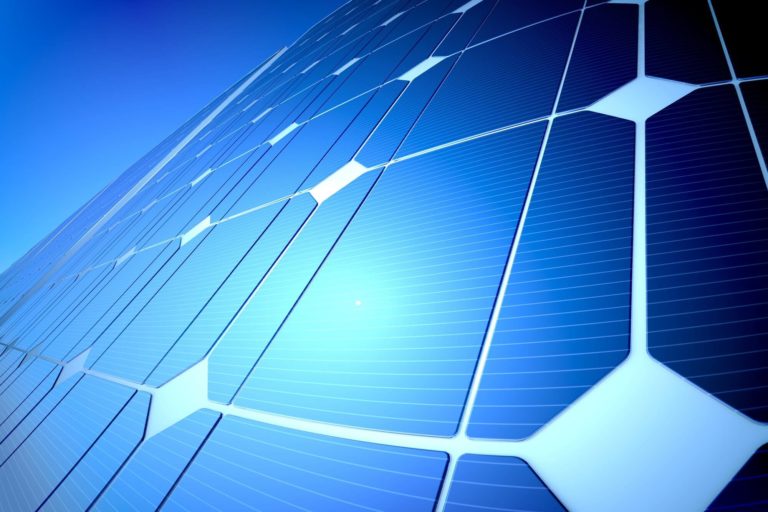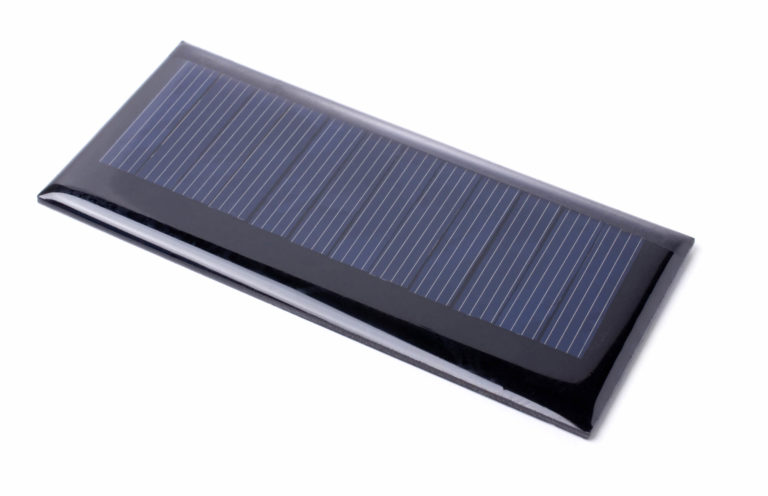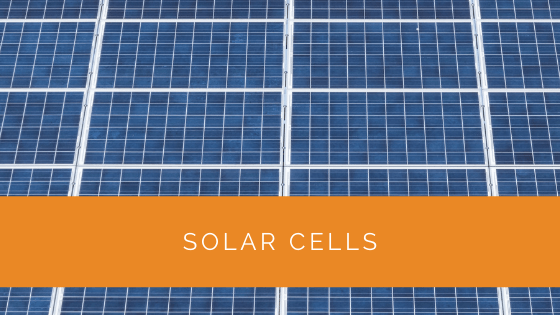You may have already heard of solar panels and what their functions are. However, do you know what enables solar panels to convert light into electrical energy?
Well, solar cells are the secret behind this energy conversion.
Also known as photovoltaic cells, they are responsible for absorbing light from the sun and converting it to electrical energy in our homes.
Please continue reading to find out everything there is to know about solar cells and how they produce energy.
Contents
- 1 Key Takeaways
- 2 What Are Solar Cells?
- 3 Materials Used for Making a Solar Cell
- 4
- 5 Different Types of Cells in Solar Panels
- 6 Applications of Solar Cells and Solar Power
- 7 Solar Cell FAQ
- 8 Case Study: Enhancing Energy Efficiency with Advanced Solar Cell Technology
- 9 Expert Insights From Our Solar Panel Installers About Solar Cells
- 10 Experience Solar Excellence with Us!
- 11 To Sum Up
Key Takeaways
- Solar cells, also known as photovoltaic cells, convert sunlight into electrical energy used in homes. They are made of various materials, with silicon being the most common choice due to its abundance and affordability.
- Different types of solar cells, such as crystalline silicon, thin-film photovoltaics, multijunction cells, concentration photovoltaic cells, perovskite solar cells, and organic photovoltaics, have varying efficiencies and applications.
- Solar cells have a wide range of applications, from powering small toys to industrial complexes, electrical fences, remote lighting, portable power supplies, satellites, agricultural irrigation, and emergency lighting.
What Are Solar Cells?
Photovoltaic cells make up a solar panel system. These tiny cells are present on the surface of the panels and face the sun to absorb light. Each cell is made of crystalline silicon and has the potential to absorb light and produce an open circuit voltage ranging between 0.5 and 0.6 volts.
Additionally, these cells completely cover silicon solar panels to produce renewable energy efficiently. And not to forget, most of these solar cells come with photodetectors. This enables them to figure out the difference between darkness and light. Furthermore, these cells automatically detect the presence of solar radiation and absorb incident light.
However, a photovoltaic cell can also convert artificial light into electrical energy. But solar energy is preferred because then the energy input is done free of cost. Other forms of incident light can also accelerate the production of electrical energy in solar cells.
You must also keep in mind that the efficiency of solar panels is essentially the amount of electricity they can generate, depending on their total input.
The total efficiency of the solar cell is based on the values of different factors, including thermodynamic efficiency, charge carrier separation efficiency, reflectance efficiency, and conductive efficiency.
Lastly, it is important to know that the theoretical maximum efficiency of semiconductors is the highest, which is one of the reasons why they are used to make solar panels. These materials are known to reach maximum power and generate large amounts of electric current.

Materials Used for Making a Solar Cell
A wide range of semiconducting materials can be used for making solar panels. These materials can be organic, but sometimes manufacturers pick inorganic materials for better production. However, the production industry is heavily dominated by a few top materials.
This includes:
Silicon
Silicon is one of the most abundant elements on earth and is a very affordable choice for manufacturers. This semiconductor material is very receptive to the light received by the sun.
Another excellent quality of this material is that it is not toxic. It can easily be handled by people and used for producing solar cells without worrying about health issues. The only downside of this material is that it does not absorb light as efficiently and has a bandgap that is lower than other semiconductor materials.
Gallium Arsenide
Gallium arsenide may be a little more effective than silicon. However, this material is extremely toxic and difficult to handle. Additionally, the cost of this material is very high too. This makes it a less popular choice for solar cell materials.
Germanium
Germanium is used alongside silicon and is another popular material in the industry. One of the best features of this material is that it can be used in both crystalline and amorphous forms. Additionally, it does not have many impurities either.
Selenium
This is one of the hardest materials to obtain when it comes to the production of solar cells. It is an effective electricity-conductive solution, but it is not commercially viable.
Different Types of Cells in Solar Panels
Solar cells are generally made from semiconductor materials to generate electric power. These materials must be used to make high-efficiency solar cells that absorb light from solar illumination. Most solar cells generate electrical power at home, but solar panels also serve important purposes in space.
All these cells are either single-junction or multi-junction. Additionally, here are a few different types of materials used to make them:
Crystalline Silicon
Crystalline silicon is also known as solar-grade silicon and is one of the most popular materials for making the cell surface. There are many different sub-types of amorphous silicon solar cells. These include monocrystalline silicon cells, polycrystalline silicon, and mono-like-multi silicon (MLM), to name a few.
Since silicon is the second most abundant element on the earth’s surface, producing solar systems is cost-effective and grows popular globally.
Thin-film Photovoltaics
Thin-film photovoltaic cells have a very similar mechanism to crystalline solar panels. However, these solar modules are a lot heavier than their counterparts. This is because thin layers of the material are trapped between two panes of glass.
Additionally, these solar systems also have a significantly lower impact on the environment. Different thin-film solar panels include gallium arsenide thin film, copper indium gallium selenide, etc.
Multijunction Cells
Multijunction cells, as the name suggests, are made of numerous cell layers put together. These layers all have very different bandgap energy. This bandgap energy of the layers enables light absorption from various parts of the solar spectrum.
They are one of the most efficient types of solar cells used in the industry. However, it is quite expensive to manufacture them on a larger scale. This is also one of the reasons why they are considered a vital component of space projects.
Concentration Photovoltaic Cells
Concentration photovoltaic cells generally use mirrors or lenses to direct the sunlight toward the solar cell surface. They take a lot of sunlight and focus it on a reduced surface area. This technique makes the solar panel system a lot more efficient, too.
Moreover, they are not too big either. This helps reduce material costs and allows you to invest in higher quality and expensive materials. These modules are still quite expensive and are not used on a larger scale.
Perovskite Solar Cells
These solar cells produce electricity in the same way thin-file generation cells do. They have layers of material inside, which are then coated into the substrate. This substrate is the bottom-most layer and serves as a supporting structure in the panel.
This PV cell type is easy to assemble and highly efficient. Today, these cells have reached efficiencies higher than their former levels. The only downside to these panels is that they are not sturdy enough to withstand outdoor conditions for prolonged periods.
Organic Photovoltaics
This type of PV cell is made of organic materials and carbon-rich compounds. They are among the emerging photovoltaics and are slowly growing in popularity. They may not be as efficient as silicon cells, but are very easy to manipulate.
The amount of renewable energy generated with the help of these cells can be altered by altering the composition of the solar system. Managing features of the cells like color, transparency, and band gaps, can help improve its specific function.

Applications of Solar Cells and Solar Power
The photovoltaic process has a wide range of applications. Solar cells can be used for anything today, from powering small toys to industrial complexes. Additionally, here are a few top applications of solar power today.
They can be used:
- for making solar-powered toys and other trinkets
- to supply power to electrical fences in homes and commercial compounds
- to light up places remotely without any need for access
- in portable power supplies
- in satellites and space stations
- for agricultural aspects like water pumping through fields
- as emergency lighting in homes
- to provide extra energy to the electric grid
Solar Cell FAQ
What Are Solar Cells?
Solar cells are devices that convert sunlight into electricity. They are made of materials that can absorb sunlight and generate an electric current.
How Do Solar Cells Work?
Solar cells work by absorbing sunlight and converting it into electricity. The absorbed sunlight creates an electric field in the solar cell, which drives the current through the material.
How Are Solar Cells Made?
Solar cells are made from silicon, a common element found in sand. The silicon is purified and placed in a furnace heated to extreme temperatures. This process creates a single crystal of silicon, which is then cut into thin wafers. The wafers are then coated with a layer of metal that will serve as the electrical contact.
What Technology Do Solar Cells Use to Turn Light Into Energy?
Solar cells use a process called photovoltaics to convert light into electricity. In photovoltaics, sunlight is absorbed by the solar cell and generates an electric field. This field drives the current through the material and produces electricity.
What Do Solar Cells Convert Into Electricity?
Solar cells convert sunlight into electricity. The sunlight creates an electric field in the solar cell, which drives the current through the material and produces electricity.
How Long Do Solar Cells Last?
Solar cells can last for many years. They are typically warranted for 20-25 years, but they have been known to last much longer. One study found that some commercial solar panels had an average lifespan of 40 years. However, solar cells will eventually degrade and need to be replaced. The good news is that solar panels can be recycled and used again!
Case Study: Enhancing Energy Efficiency with Advanced Solar Cell Technology
Background
Solar Panels Network USA was approached by a commercial client looking to upgrade their existing solar panel system to enhance energy efficiency and reduce overall operational costs. The client, a mid-sized manufacturing facility, had an outdated solar setup and wanted to explore advanced solar cell technologies to optimize their energy production.
Project Overview
The project involved assessing the current solar panel system, identifying inefficiencies, and recommending an upgrade path using advanced solar cell technologies. We aimed to significantly boost the energy output and efficiency of the client’s solar installation.
Implementation
Initial Assessment and Requirements Analysis
Our team conducted a comprehensive evaluation of the existing solar panel system. This included analyzing the types of solar cells used, their current efficiency, the system’s overall performance, and the energy consumption patterns of the facility. The client’s primary goals were to increase energy production, reduce electricity costs, and ensure a quick return on investment.
Recommendation and Solution
Based on the assessment, we recommended upgrading to a combination of high-efficiency monocrystalline silicon cells and cutting-edge multijunction cells. Monocrystalline silicon cells were chosen for their superior efficiency and durability, while multijunction cells were selected for their ability to capture a broader spectrum of sunlight, thereby maximizing energy production.
Installation Process
The installation process involved several key steps:
- System Design: We designed a new solar panel array layout optimized for maximum sunlight exposure, taking into account the facility’s roof space and structural integrity.
- Procurement and Preparation: High-quality monocrystalline and multijunction solar cells were procured, and preliminary preparations were made to ensure a smooth transition from the old system to the new one.
- Installation: The old solar panels were carefully removed, and the new panels with advanced solar cells were installed. Special attention was given to the angle and orientation of the panels to optimize sunlight capture.
- Integration and Testing: The new solar panels were integrated with the facility’s existing energy management system. Rigorous testing was conducted to ensure that the new setup was functioning optimally and meeting the desired performance benchmarks.
Results
The upgraded solar panel system significantly improved the facility’s energy efficiency. Key results included:
- Increased Energy Production: The new system generated approximately 30% more electricity than the old system, thanks to the higher efficiency of the monocrystalline and multijunction cells.
- Reduced Electricity Costs: The facility saw a substantial reduction in electricity costs, resulting in savings of thousands of dollars annually.
- Enhanced Sustainability: By upgrading to more efficient solar technology, the facility reduced its carbon footprint and contributed to its sustainability goals.
- Quick Return on Investment: The increased energy production and cost savings led to a faster return on investment than initially projected, with the client recouping the upgrade costs within three years.
Summary
This case study demonstrates the significant benefits of upgrading to advanced solar cell technologies. By leveraging high-efficiency monocrystalline and multijunction cells, Solar Panels Network USA helped a commercial client enhance their energy production, reduce operational costs, and achieve their sustainability goals. This successful project highlights the potential of cutting-edge solar technology to drive energy efficiency and economic savings.
Expert Insights From Our Solar Panel Installers About Solar Cells
Solar cells are the heart of any solar panel system, transforming sunlight into usable electricity. Understanding the materials and technologies behind these cells helps consumers make informed decisions about their solar investments.
Solar Energy Consultant
The efficiency of solar cells can vary significantly depending on the type of material used. Silicon remains the most popular choice due to its balance of efficiency, cost, and availability.
Lead Solar Technician
Recent advancements in multijunction and perovskite solar cells show promise for the future of solar technology, potentially increasing efficiency and reducing costs even further.
Senior Solar Installer
Experience Solar Excellence with Us!
Trust in Solar Panels Network USA, where our seasoned experts deliver top-quality solar solutions for homes and businesses nationwide. With a legacy of countless successful installations and a commitment to sustainable energy, we’re your reliable partner in the solar journey. Ready for a brighter, eco-friendly future? Call us now at (855) 427-0058 and harness the sun’s power!
To Sum Up
Solar energy is an excellent renewable energy source that you must invest in. However, most people fail to understand its potential due to a lack of knowledge. So, we hope you have learned everything about this fascinating technology through this article to be a part of this energy revolution.
So, what’s the hold-up? Invest in solar energy today, as this low-cost solution will illuminate your life!
About the Author
Solar Panels Network USA stands at the forefront of solar energy solutions, driven by a team of seasoned solar engineers and energy consultants. With over decades of experience in delivering high-quality solar installations and maintenance, we are committed to promoting sustainable energy through customer-centric, tailored solutions. Our articles reflect this commitment, crafted collaboratively by experts to provide accurate, up-to-date insights into solar technology, ensuring our readers are well-informed and empowered in their solar energy decisions.

